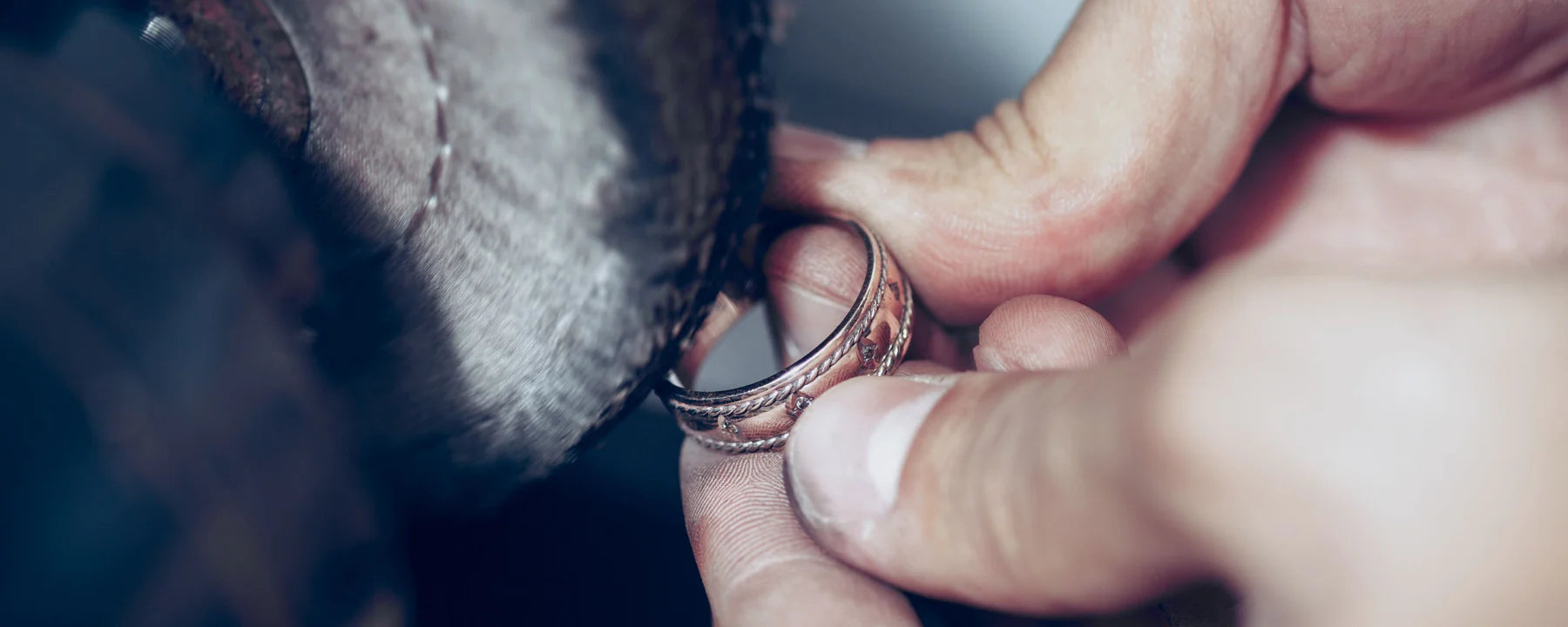1. Rhodium Plating:
Rhodium plating is a process where a thin layer of rhodium—a precious, silver-white metal from the platinum group—is applied to the surface of jewelry, typically made from white gold, silver, or platinum. Rhodium is known for its reflective, shiny surface, which helps give jewelry a bright, polished, and smooth finish.
What Does Rhodium Plating Do?
Enhances Appearance: Rhodium plating gives a piece of jewelry a bright, mirror-like finish. It can enhance the natural shine of the metal and give it a more luxurious, white appearance. This is especially popular for white gold jewelry, as rhodium gives it a brighter, whiter look compared to the natural yellowish hue of white gold.
Improves Durability: Rhodium is very hard and scratch-resistant. It helps protect the jewelry underneath from damage, tarnishing, and scratching.
Prevents Tarnish: Rhodium is highly resistant to corrosion and tarnish, making it ideal for jewelry that comes into contact with skin oils, moisture, and chemicals (e.g., perfumes or lotions).
The Rhodium Plating Process:
Cleaning the Jewelry: The jewelry is thoroughly cleaned to remove any dirt, oils, or previous polish that may interfere with the plating process.
Applying the Rhodium: Using a process called electroplating, the jewelry is dipped into a rhodium bath, where an electric current is used to bond the rhodium to the surface of the jewelry. This creates a thin, durable layer of rhodium over the base metal.
Drying and Polishing: After plating, the jewelry is polished to ensure a smooth, glossy finish.
When Should Rhodium Plating Be Done?
For White Gold Jewelry: Over time, white gold jewelry can develop a yellowish tint. Rhodium plating helps maintain its bright white appearance.
For Silver Jewelry: Rhodium plating can also be used to enhance sterling silver jewelry, giving it a shiny, mirror-like finish that resists tarnishing.
When You Want Extra Shine: If your jewelry is looking dull or you want to give it a refreshed, shiny look, rhodium plating is a great option.
Rhodium plating does wear off over time, especially with frequent wear (e.g., rings and bracelets), so it may need to be reapplied periodically—usually every 1 to 2 years.
2. Polishing:
Polishing is the process of smoothing and shining a piece of jewelry, removing scratches, scuffs, and tarnish to restore its luster and brilliance. Unlike rhodium plating, polishing doesn’t involve adding a new metal layer; instead, it refines the existing surface of the jewelry.
What Does Polishing Do?
Removes Scratches and Scuffs: Over time, jewelry can develop surface scratches or lose its shine due to regular wear. Polishing helps smooth out these imperfections and bring back the original finish.
Restores Shine: Polishing can restore the bright, reflective surface of jewelry, enhancing its overall appearance. This is especially important for pieces made of metals like gold, platinum, or silver that tend to lose their shine over time.
Cleans the Jewelry: Polishing also serves to remove dirt, oils, and residues from the surface of the jewelry, helping it look cleaner and more vibrant.
The Polishing Process:
Cleaning: Jewelry is first cleaned to remove dirt or oils, which could interfere with the polishing process.
Polishing: The jewelry is then polished using specialized tools and compounds (such as a polishing cloth, buffing wheel, or polishing compound) to smooth the surface and restore shine. Polishing is typically done with a rotary tool or by hand, depending on the intricacy of the piece.
Final Touch: After polishing, the jewelry is inspected for any remaining scratches or scuffs, and additional polishing may be done if necessary.
When Should Polishing Be Done?
Dull or Scratched Jewelry: If your jewelry has developed surface scratches or appears dull, polishing is an excellent way to restore its shine and smoothness.
Regular Maintenance: Regular polishing is often part of jewelry maintenance, especially for pieces that are worn daily, like rings or bracelets.
Key Differences Between Rhodium Plating and Polishing:
Rhodium Plating adds a layer of rhodium to the jewelry to enhance its color, durability, and resistance to tarnishing. It’s often used for white gold, silver, and platinum jewelry.
Polishing involves smoothing and shining the jewelry's surface to remove scratches, restore shine, and improve its overall appearance. It doesn't add any material to the jewelry.
Combining Rhodium Plating and Polishing:
Many jewelers offer both rhodium plating and polishing as part of their jewelry care services, especially for white gold or silver pieces. Rhodium plating will give your jewelry that shiny, reflective finish, while polishing will restore the original brilliance and smoothness of the metal.
If you have jewelry that needs to be refreshed, both treatments can breathe new life into your pieces, giving them a stunning, like-new look. Do you have a specific piece of jewelry you're considering for rhodium plating or polishing?


